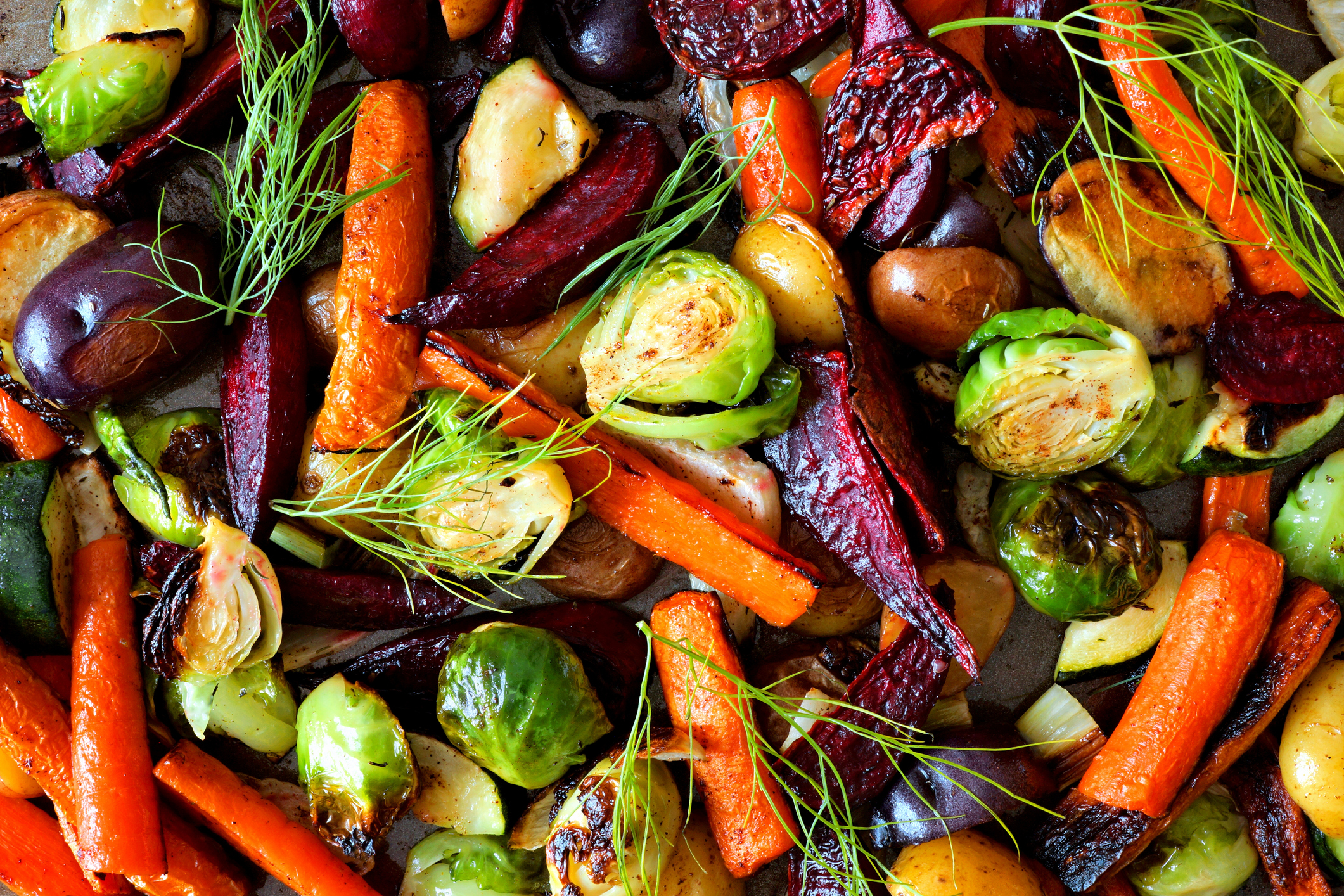- 855.224.8655
- Schedule a Tour

As the days get shorter and the trees change colors in many parts of the country, our seasonal produce starts to reflect deeper colors of burgundy, green and gold. Bring that beauty inside to your kitchen table by incorporating all these colors of fall. Not only will your table look beautiful at dinnertime, but your body will be benefiting nutritionally, as well. (And at our schools look for our new fall inspired snack – Sweet Potato Crackers paired with our Harvest Apple Chip Dip (get the recipe here!). The crackers contain 8 grams of whole grains and are spiced with cinnamon to give them a hint of sweetness.)
Apples– Take advantage of all the varieties this time of year and try something new. I love varieties like Snow and Sweet Tango. Chop them up and cook them in a slow cooker overnight along with oatmeal, cinnamon and nuts! This is great way to warm up on a chilly autumn morning and is a quick breakfast before heading out the door to work and school. Find the recipe for our Golden Apple Oatmeal here.
Cranberries – This tart fruit is native to North America and only harvested in the fall. Although they are small they pack a punch nutritionally. Try thinly slicing them and adding them to a salad. Or toss them in the slow cooker with the apples and oatmeal.
Persimmons – This small, orange fruit grows on trees and has a honey-like taste. They are only available in fall and early winter. Add them to yogurt parfaits or just grab a spoon and eat them straight from the skins.
Sweet Potatoes – These naturally sweet spuds provide a great source of Vitamin A. Skip adding brown sugar and butter and try topping them with your favorite nut butter and cinnamon instead. You can even eat the skin to get extra fiber!
Acorn Squash – This beautiful golden winter squash is a crowd pleaser. Slice in half and scoop out the seeds. Roast in the oven cut side up. After they are done cooking, fill with a harvest rice blend including brown rice, raisins, and almonds to make a spectacular entrée.
Pears – Many varieties are available well into winter. Pears are a great source of Vitamin C and are also delicious on their own. Another option is to slice them, toss them with some cinnamon and bake on a sheet for 5 minutes at 350 degrees. Then add the roasted pears to a salad or serve as side dish at dinner.
Brussels Sprouts – This vegetable is like little mini-cabbages but unlike cabbage they provide a good source of protein as well. For a fall spin on chicken salad, try combining shredded Brussels sprouts, shredded chicken, Greek yogurt, and cranberries.
Artichokes – You might be used to buying them in a can, but you should consider switching to fresh when they are in season this fall. Gram for gram, artichokes provide more antioxidants than any other vegetable. To get the most flavor and nutrients, try them roasted. First trim the stem and snip off the pointed ends of the leaves. From here, open up the leaves and insert some of your flavorings such as garlic and lemon. Wrap in aluminum foil and bake for 35-45 minutes at 425 degrees.
Beets –Beets are a must for people with heart disease because they are known to increase blood flow and improve cardiovascular function. They are delicious roasted. Or, if you want to skip the hassle and mess of cooking them but keep the nutritional benefits, buy vacuum packed pre-cooked beets. Serve as a standalone dish or pair with sliced oranges and add them to a salad! (Also, fresh beets are often sold with their greens still attached – don’t let those go to waste! The greens can be added to salads or thrown in a smoothie.)





